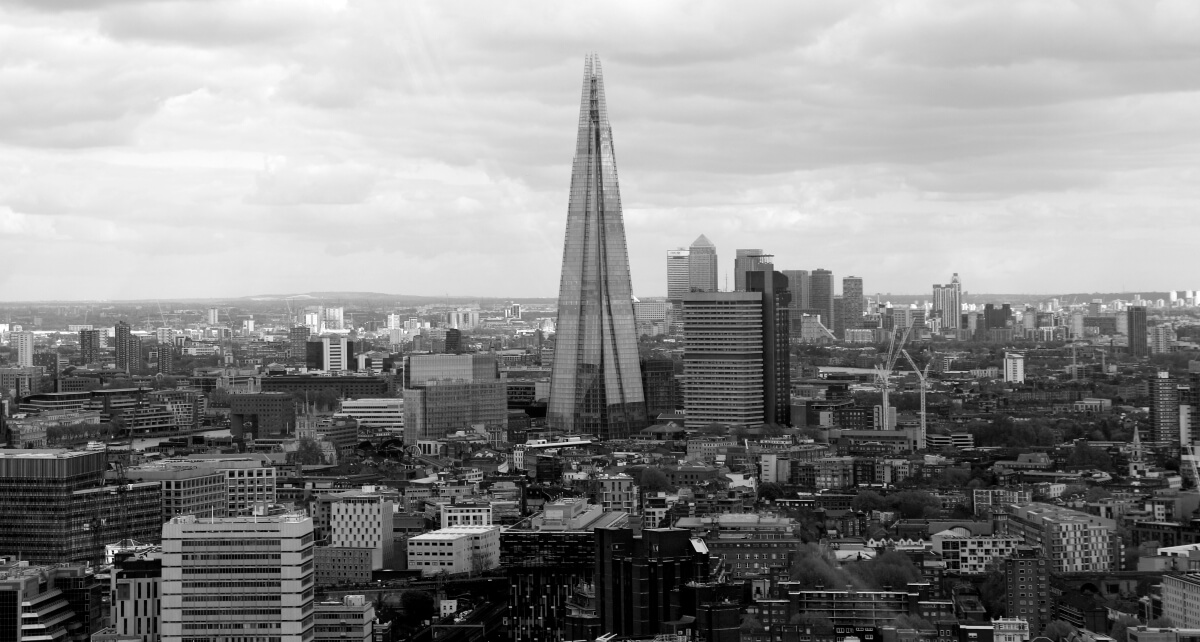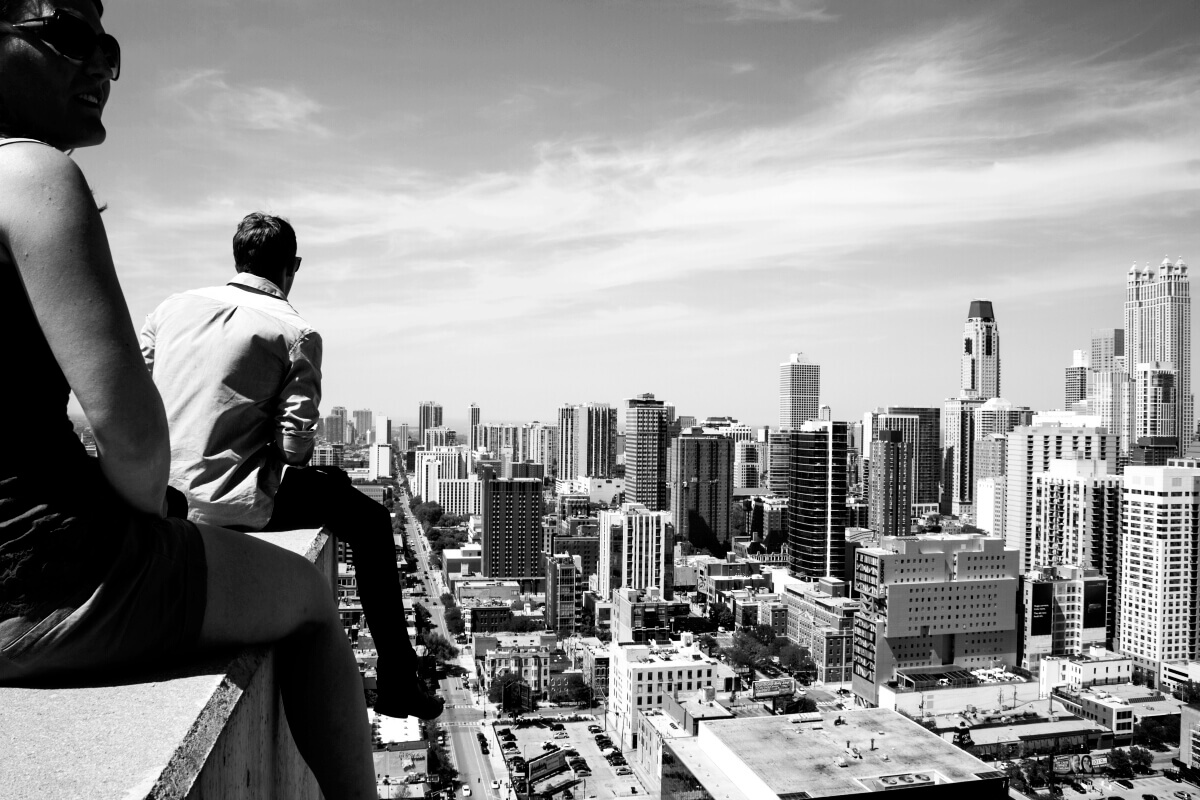A few months ago, a video spread across the internet of teenagers hanging without safety equipment from the 771ft One Canada Square building in Canary Wharf. They were practicing rooftopping, a form of urban exploration that involves infiltrating and climbing the tallest buildings in the world.
The structures scaled in rooftopping are often large corporate buildings or social housing sites scheduled for demolition. The infiltration of private property by anarchic teenagers is argued by Bradley Garrett, author of Place Hacking: Exploring the City, to be a way of reclaiming public space and re-engineering the city into a site of play. London is mutating into a luxury flat factory, with 13% of property owned by foreign investors, and a 97% decline in social housing construction since 2010. The thought of some battered trainers muddying-up a view typically reserved for the one percent seems like an exciting way of resisting – or even just sticking a finger up at – the inequalities of the housing market.
Using buildings as Center Parcs-style climbing frames seems especially apt considering that normal people are increasingly denied the right to a good view. Whilst high-rises are often considered to be the domain of the working classes, being elevated above the masses is increasingly becoming something to lust after. Social housing blocks like the Barbican and Balfron towers have been sold off to the mega rich. And according to estate agency Knight Frank, on average, prices rise by 1.5% per square foot on each storey of a high-rise and by 2.2% at penthouse level.

Like London’s housing market, rooftopping has changed a lot over the years. Originally, it was an underground practice with participants remaining anonymous, keeping their climbs a secret or sharing them with a limited number of allies through zine publications. Among those that took part were the kinds of people who find irrigation interesting and enjoy discussing structural engineering at house parties. Others were in it for the feeling of imminent death that comes with dangling your legs off a structural megalith.
As it swells in popularity, rooftopping’s foremost activists are no longer faceless explorers but social media gods. Rooftopping collective Apex Mob has 21.2K followers on Instagram. Team member Harry Gallagher, or Nightscape as he is known on social media, has 71K followers and half a million on Youtube, as well as a flourishing merchandise shop. The group wears slick streetwear and operates with the enterprising thrift of Supreme-drop addicts. For criminologist and urban exploration enthusiast Theo Kindynis, Apex Mob appear to be driven more by aesthetics than political potentialities or thrill seeking, “It’s a tedious cliché now. If you’re talking about it as a potentially political practice, how do you photograph someone posing like that in a way that evokes the political, because to me it looks like something from a Pepsi advert. It epitomises commodified resistance where it is all about rebellious imagery, but it doesn’t make me want to overthrow capitalism.”
However, totally resisting capitalism is a luxury that most people cannot afford. Though many members of Apex Mob are from privileged backgrounds, some, including Harry Gallagher, come from working class roots. On the morning of the release of Gallagher’s Rooftoppping Canary Wharfvideo where he climbs One Canada Square, his mum Amanda said that she could not afford a jar of coffee. Given that she suffers from chronic migraines that have left her unable to work, her son’s selling t-shirts online for £25.99, perhaps has less to do with Youtube followers and more to do with supporting his family.
Apex Mob’s growing popularity is making the sport increasingly criminalised. Nightscape has been arrested for climbing the West Ham Stadium, the Sideman Tower and One Canada Square amongst others. Rather than fuelling rooftopping into a more transgressive practice, for Kindynis, Apex Mob is ruining the sport for everyone else. “If all these kids keep getting caught they will change the legislation so that being on a rooftop or a crane becomes a criminal offense. Because at the moment, unless they want to fuck you or you have broken something you’re not going to get in any trouble. You might get nicked and spend the night in a cell but that’s it. These kids are taking the piss because they know nothings going to happen to them.”
Though more and more teenagers are engaging in the practice of rooftopping, it is yet to become an act of collective resistance. As such, it has little impact on the way space is controlled. As Kindynis explains, “It is political, it is a micro-form of resistance but the developers don’t give a shit about that. They’re still going to make millions out of this building. You need to find a process which prevents a luxury flat from being built. Rooftopping doesn’t change the dynamics of who dictates what goes up in that space.”
One reason for this is that rooftopping lends itself to individualism; people seek the glory of conquering the highest, most impenetrable space, “The capitalist mindset is embodied in the practice because it’s hyper-competitive, if you found a cool rooftop then theoretically you could share it with people but this isn’t what happens. People want unique pictures for their Instagram. Some have been known to put padlocks on rooftops so others can’t access them.”

Though many rooftoppers have reported that the practice generates a sense of oneness with the materiality of the city, for Human Geographer Oli Mould this oneness is eliminated with the final composition of the rooftopping expedition. “If you’re really high up you’re not innate with the city, you have this God’s eye view where you’re elevated above the daily grind. Those who sit above the city have historically wanted control of it.”
Like the property developers who buy out penthouses, famous rooftoppers are using the sport to gain ownership over territory. For Kindynis there is something problematic about this exploitation of London’s buildings, “you’ve got these middle-class guys posing on top of social housing blocks. It’s like they are a conqueror and there’s nothing progressive about that.”
Even the micro-politics of rooftopping is being appropriated by the logic of the market. From punk high-tea at the W hotel to Nike parkour ads, capitalism feeds off the edgy and alternative as a means to sell products. For Kindynis, rooftopping has become anaesthetised by the banal swathe of advertising. “If you have Nightscape and Apex Mob and whoever it is this week with all the branding it pushes rooftopping in a reactionary direction where any hope of progressive practice gets replaced by this inane, hypebeast, superficiality. It could be cool, it could be DIY, it could involve communities and they could do political banner drops but it has become solely about the individual pursuit of Instagram glory and sponsorship deals.”
![Political Critique [DISCONTINUED]](https://politicalcritique.org/wp-content/uploads/2015/09/Political-Critique-LOGO.png)
![Political Critique [DISCONTINUED]](https://politicalcritique.org/wp-content/uploads/2015/09/Political-Critique-LOGO-2.png)